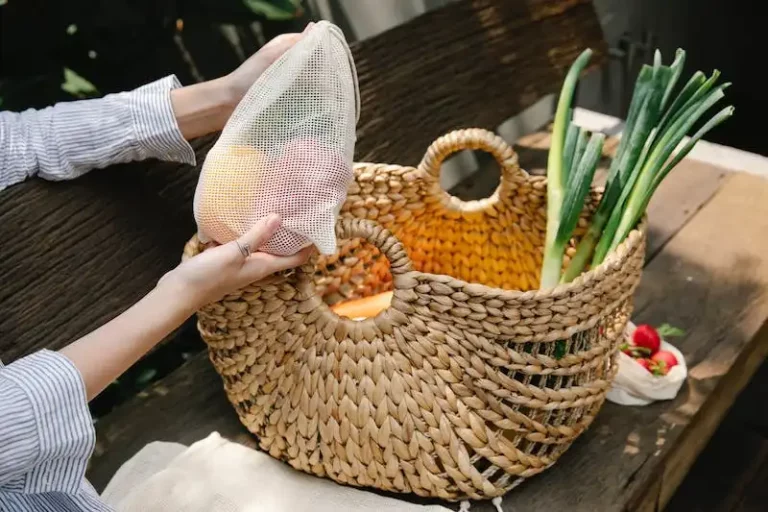When it comes to growing pole beans, there are several advantages that make them a popular choice for many gardeners. These heat-loving vegetable plants are easy to grow and can be a great addition to any yard. Whether you have a small garden or a large field, pole beans can thrive in almost any soil.
One of the first steps to planting pole beans is to sow them directly in the ground. Johnny’s Selected Seeds recommends sowing the seedlings about 4-6 inches apart in rows that are 3 feet apart. Make sure the soil is well-drained and has been thoroughly prepared for planting.
Support is a crucial step in growing pole beans. These tall plants need something to climb onto, such as trellises, poles, or even wire cages. Alternatively, you can also plant them near a fence or wall that they can grow up against.
Pole beans usually start to flower in about 3-4 weeks after sowing, and the pods will appear soon after. It’s important to pick the beans regularly to encourage more production. Daily picking is recommended, as this will give the plants a boost and help with pollination.
Wondering when is the best time to start planting pole beans? Phil Bauer, a gardener with years of experience, suggests sowing them in April when the soil has warmed up. Make sure there is no danger of frost, as pole beans are very tender plants.
Overall, growing pole beans can be a rewarding experience. They are easy to grow, produce abundant yields, and provide a delicious addition to any meal. So why not give pole beans a try in your garden this year?
Planting Pole Beans How To Grow Pole Beans
When it comes to growing pole beans, there are a few key steps you need to follow, starting with sowing the seeds at the correct time. Most pole bean varieties have a longer growing season, so it’s recommended to start planting them in late spring or early summer, around April or May.
Before you sow the seeds, make sure you have a sunny spot in your yard or garden with well-draining soil. Pole beans thrive in full sun and well-drained soils, so choosing the right spot is crucial for their growth.
Once you have the right spot, it’s time to prepare the soil. Remove any weeds or grass from the area and then dig a trench about 6 inches deep. If your soil is heavy clay or doesn’t drain well, you can also create a raised bed or mound to improve drainage.
Next, plant your pole bean seeds along the trench, spacing them about 4-6 inches apart. Cover the seeds with about 1 inch of soil and water them well. Keeping the soil moist is essential for successful germination and seedling development, so make sure to water regularly.
Pole beans require support as they grow, so it’s recommended to provide a trellis, teepee, or other support structure for them to climb. This will not only keep the beans off the ground but also make harvesting easier.
As your pole beans grow, keep an eye out for pests and diseases. Common pests that may affect pole beans include aphids, bean beetles, and caterpillars. Regularly inspect your plants and take appropriate measures to control these pests.
Once your pole beans start producing, it’s time to harvest. Pole beans are best when picked young and tender, so check your plants daily for ripe pods. Simply snap them off the vine and enjoy their delicious flavor.
In the tropics, pole beans can be grown year-round, but in colder climates, they are treated as annual crops. If you’re growing pole beans in a cooler climate, you may want to cover them with plastic or a row cover to help keep them warmer and extend the growing season.
In conclusion, growing pole beans is relatively easy and rewarding. By following the steps outlined on this page, you can enjoy a bountiful harvest of delicious and nutritious beans. So start sowing your pole beans and soon you’ll be enjoying their fresh, green goodness!
When to Plant Pole Beans
Knowing the right time to plant pole beans is crucial for a successful harvest. Pole beans, also known as vigna beans or yard-long beans, are a type of vining plant that grows tall and produces flavorful beans.
When planting pole beans, the first step is to select a site that receives full sun and has well-drained soil. Pole beans thrive in warm soil, so wait until all danger of frost has passed before sowing the seeds. In the tropics, pole beans can be planted year-round.
If you live in a cold climate and want to get a head start on the growing season, you can start pole beans indoors. Fill flats or containers with a well-draining planting mix and sow the seeds about 1 inch deep. Keep the soil moist and provide the plants with plenty of light. Once the danger of frost has passed and the seedlings have hardened off, you can transplant them outdoors.
When planting pole beans outdoors, prepare the soil by removing any weeds or debris. If your soil is heavy or clay-like, you may need to amend it with organic matter to improve drainage. Adding compost or well-rotted manure to the soil before planting can also boost the plants’ growth.
Before sowing the pole bean seeds, make sure to space them properly. Pole beans need about 4 to 6 inches of space between each seed. Plant the seeds about 1 inch deep and cover them with soil. Water the soil thoroughly after planting to ensure good seed-to-soil contact and to encourage germination.
To protect the young plants from cool temperatures and pests, you can use a plastic cover or row cover. This cover helps to create a mini-greenhouse effect, keeping the soil warm and providing some protection against pests. Once the plants have established and the weather has warmed up, you can remove the cover.
Pole beans require regular irrigation, especially during dry periods. Water deeply, making sure the soil is evenly moist. Avoid overwatering, as this can cause the plants to become waterlogged and suffer from root rot.
Pole beans typically take about 60 to 70 days to mature and start producing beans. Harvest the beans regularly to encourage continued production. To harvest, simply snap off the pods when they are young and tender. Beans that are left on the plant for too long may become tough and stringy.
So, whether you plant pole beans indoors or outdoors, following these steps will give you the best chance for success. Happy planting!
How to Plant Pole Beans
Planting pole beans is a fairly simple process that can lead to a bountiful harvest of delicious and nutritious vegetables. Follow the recommended steps below to ensure a successful and thriving bean crop:
- Start by selecting a well-drained location in your yard or garden. Pole beans prefer full sun, so choose an area that receives at least 6 hours of direct sunlight daily.
- Prepare the soil by removing any weeds or grass and loosening it with a garden fork or tiller. Adding organic matter, such as compost or aged manure, can help improve soil fertility and drainage.
- If your soil is heavy or has poor drainage, consider creating raised beds or mounds to provide better growing conditions for your beans.
- Next, it’s time to plant the pole beans. Dig holes that are around 1 inch deep and 3 inches apart in rows that are approximately 3 feet apart. If you’re growing multiple rows, leave enough space between them for easy access and maintenance.
- Place one or two pole bean seeds in each hole and cover them with soil. Water the newly planted seeds thoroughly.
- As the pole beans grow, provide support for their vines to climb. You can use trellises, bamboo poles, or even a fence as a support structure. Be sure to set up the support system shortly after planting to avoid damaging the growing plants.
- Water your pole beans regularly to keep the soil evenly moist. Aim for about 1-2 inches of water per week, either through rainfall or irrigation. Avoid over-watering, as this can lead to disease and root rot.
- Monitor your pole beans for pests, such as aphids or spider mites, and take appropriate measures to control them. Regularly inspect the plants for any signs of diseases, including wilting or yellowing foliage, and address the issues promptly.
- Harvest your pole beans once they reach the desired size. Different varieties have different recommended harvesting times, but generally, you can start picking the beans when they are about 4-6 inches long and still tender.
- To harvest, simply pick the beans off the vine by gently pulling them. Try to avoid damaging the plants or any developing flowers that may be present, as these flowers are crucial for pollination and future bean production.
- Enjoy your fresh pole beans in various culinary preparations, including steaming, sautéing, stir-frying, or canning. They can be a flavorful addition to salads, side dishes, and even main courses.
By following these simple steps, you can successfully plant and grow pole beans in your garden. These versatile and productive vegetables offer a range of advantages, including high nutritional value, attractive foliage, and the ability to attract beneficial insects. Whether you have a small backyard garden or a larger vegetable production area, pole beans can be a rewarding and delicious addition to your harvest.
How to Grow Pole Beans
Growing pole beans is a great way to add a tasty and nutritious vegetable to your garden. Whether you have a small yard or a large space, pole beans are a versatile plant that can be grown in a variety of conditions. Here are the steps you need to follow to grow pole beans successfully:
Step 1: Selecting the right variety
There are many varieties of pole beans to choose from, such as purple pod, yard-long, and lima beans. Decide what type of pole bean you want to grow and then find a reputable seed supplier to purchase your seeds from. Make sure to read about the recommended planting time, seed depth, and spacing between plants.
Step 2: Preparing the soil
Pole beans thrive in well-drained soil that is rich in organic matter. Before planting, remove any rocks or debris from the soil and then loosen it with a garden fork. Add compost or well-rotted manure to enrich the soil and improve drainage.
Step 3: Planting the seeds
Plant your pole bean seeds about 1 inch deep and 4 inches apart in rows that are spaced about 2 feet apart. Once the seeds are in the ground, cover them with soil and gently press it down with your finger.
Step 4: Providing support
Pole beans are climbing plants that need support to grow. You can use trellises, poles, or fences to provide the support they need. Make sure the support is sturdy and placed in a location where it won’t shade other plants.
Step 5: Water and irrigation
Pole beans need regular watering, especially during dry periods. Water the soil around the plants, avoiding getting the foliage wet to prevent disease. Mulching around the base of the plants can help conserve moisture and reduce weed growth.
Step 6: Harvesting
When your pole beans are mature and the pods are plump, it’s time to harvest them. Gently pull the pods off the vine to avoid damaging the plant. Pole beans are best eaten when they’re young and tender, so pick them frequently to encourage more pod production.
With these steps, you’ll be well on your way to growing pole beans perfectly every time. Happy planting!

